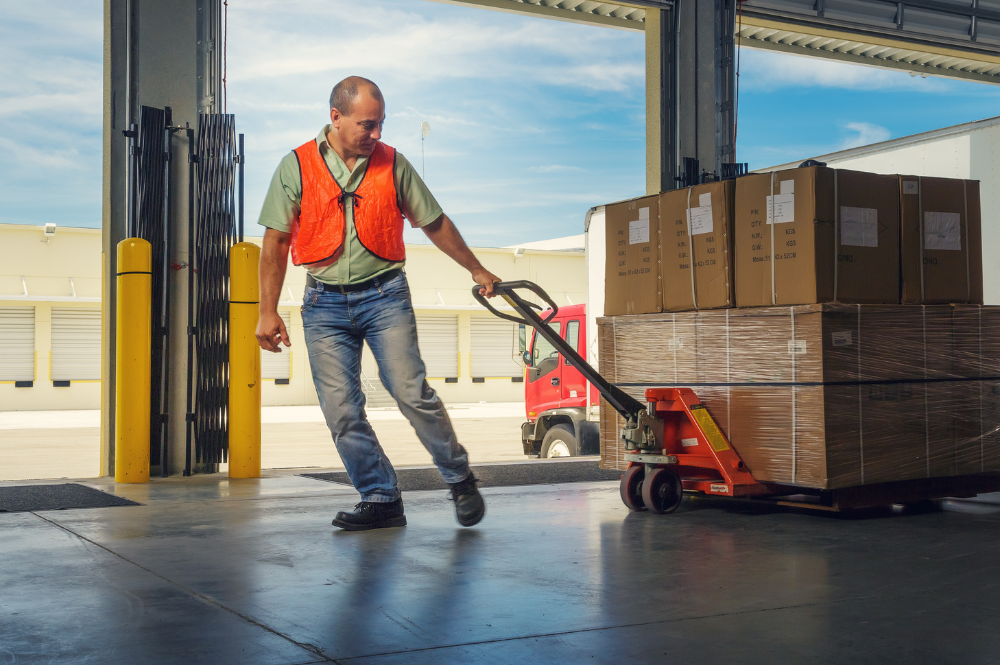Manufacturing operations run on efficiency, and a key part of that efficiency lies in choosing the right pallets. These essential tools dictate how products are stored, transported, and handled. Selecting the right type impacts costs, logistics, and long-term operational success.
But with a wide array of options available, how do you determine which pallets for manufacturing best suit your needs? The answer isn’t one-size-fits-all. Manufacturing facilities must evaluate load types, storage conditions, and transportation logistics to find material handling solutions that align with operational demands.
Key Considerations When Selecting Pallets
Choosing pallets isn’t just about picking between wood and plastic. Several factors determine their effectiveness, including:
- Load Type – Heavy, fragile, or irregularly shaped loads may require reinforced pallets or those with specific weight capacities.
- Transportation Method – Forklifts, conveyor systems, and automated warehouse operations all have different requirements for pallet compatibility.
- Storage Conditions – Will the pallets be stored in a dry, climate-controlled warehouse or exposed to outdoor elements? Moisture, temperature, and stacking requirements play a major role.
- Durability & Reusability – Some pallets are designed for single use, while others can withstand years of heavy-duty applications.
By weighing these considerations carefully, manufacturers can implement material handling solutions that streamline operations while reducing unnecessary costs.
Wood Pallets: Classic, Cost-Effective, and Functional
For decades, wood has been the go-to choice in industrial settings. These pallets offer an excellent balance of affordability and strength, making them a practical option for various manufacturing sectors.
Pros of Wood Pallets
✔ Readily available and cost-effective.
✔ Strong enough to handle heavy loads.
✔ Can be repaired and reused multiple times.
✔ Recyclable into mulch, particleboard, or repurposed materials.
Cons of Wood Pallets
✘ Vulnerable to moisture, leading to warping or mold.
✘ Prone to splintering, which may cause safety concerns.
✘ Requires heat treatment or fumigation for international shipping.
Despite these drawbacks, wood pallets remain a staple in material handling solutions due to their versatility and recyclability. Many manufacturers favor them for domestic shipping and high-volume operations.
Plastic Pallets: Long-Lasting and Hygienic
Plastic pallets offer a compelling alternative in environments where cleanliness, durability, and longevity are priorities. Designed for multiple reuse cycles, these pallets for manufacturing are gaining traction in industries where contamination control is crucial.
Pros of Plastic Pallets
✔ Resistant to moisture, pests, and chemicals.
✔ Ideal for clean environments, such as food and pharmaceuticals.
✔ Longer lifespan than wood, reducing long-term costs.
✔ Uniform design ensures consistency in automated systems.
Cons of Plastic Pallets
✘ Higher initial investment compared to wood.
✘ Less forgiving under excessive loads—prone to cracking rather than splintering.
✘ Repairing damaged plastic pallets is often difficult or impossible.
Despite the cost factor, plastic pallets provide undeniable benefits in industries requiring sterile conditions or long-term reusability. Their compatibility with automated warehouses also makes them a forward-thinking choice for manufacturers embracing advanced logistics systems.
Maximizing Efficiency with the Right Pallets
Pallets are more than just platforms; they play a strategic role in manufacturing logistics. The right selection reduces costs, prevents product damage, and supports seamless operations. Manufacturers can optimize their material handling solutions by:
- Assessing Total Cost of Ownership – While some pallets have a lower upfront price, their long-term durability determines overall value.
- Considering Industry-Specific Needs – Different sectors, such as automotive, food production, and pharmaceuticals, require pallets suited to their unique conditions.
- Implementing Recycling and Reuse Programs – Extending the lifespan of pallets through repairs and recycling reduces waste and lowers costs.
Choosing the Right Supplier for Manufacturing Pallets
Not all pallets are created equal, and working with a knowledgeable supplier can make all the difference. The right partner will provide guidance on durability, industry compliance, and the best material handling solutions for specific operations.
Key Questions to Ask a Supplier:
- Do you offer pallets tailored for high-load manufacturing applications?
- What are the long-term cost benefits of wood vs. plastic vs. hybrid?
- Can pallets be customized for unique industry needs?
- What sustainability initiatives do you support in pallet production?
Manufacturers investing in quality pallets ensure smoother logistics, fewer disruptions, and a stronger supply chain.
Find the Best Pallet Solution for Your Business
Pallet selection isn’t just about choosing a material—it’s about aligning with your manufacturing demands, logistics strategy, and cost-efficiency goals. With various options available, manufacturers can find the ideal balance between durability, affordability, and operational fit.
Ready to optimize your material handling solutions? Contact B&G Industries today to explore pallet options that meet your industry’s unique requirements.
FAQs
Which pallet type is best for heavy industrial loads?
Wood pallets are commonly used for heavy loads, but plastic pallets offer durability for long-term use.
Are plastic pallets a cost-effective choice for manufacturers?
Plastic pallets have a higher initial cost but often provide better long-term value due to their extended lifespan.
How do storage conditions affect pallet choice?
Outdoor storage can deteriorate wood pallets faster, while plastic pallets resist moisture and temperature fluctuations.
What’s the most environmentally friendly pallet option?
Wood pallets are biodegradable and recyclable, while plastic pallets last longer and reduce waste over time.
How can manufacturers reduce pallet costs over time?
Investing in reusable pallets, refurbishing damaged ones, and implementing recycling programs help lower long-term costs.

